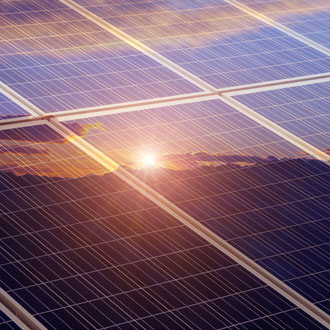Energy Trends: renewables now produce 13 times more electricity than coal
The Government’s Energy Trends and Energy Prices publications were published in March by the Department for Business, Energy and Industrial Strategy.
Energy Trends covers 2018 statistics on energy production and consumption, in total and by fuel, and provides an analysis of the year on year changes.
As landowners diversity into energy production through various methods, it was interesting to note that the report showed the output from bioenergy, waste, wind, solar energy and hydro is now nearly 13 times higher than coal – notable as coal output was higher as recently as 2012. Coal output fell to a record low level, whilst output from nuclear also fell, due to outages.
Increasing energy costs to the customer, as well as proposed VAT rises in solar panels which will come into effect in October, means that now is the perfect time to consider energy production as a viable means of saving money on your own energy use, as well as earning extra income.
Other key points from Energy Trends on renewable energy are:
• Total energy production was 3.7% higher than in 2017. This increase, the fourth in successive years, was due to rises in output  from oil, bioenergy and waste, wind and solar. Oil output rose, up 9%.
from oil, bioenergy and waste, wind and solar. Oil output rose, up 9%.
• Total primary energy consumption for energy uses was 0.6% lower than in 2017. However, when adjusted to take account of weather differences between 2017 and 2018, primary consumption fell by 1.3%.
• Final energy consumption (excluding non-energy use) was 0.7% higher than in 2017. On a seasonally and temperature adjusted basis it is estimated to have fallen by 0.3% with rises in industrial and transport consumption offset by falls in the domestic and services sectors.
• Of electricity generated in 2018, gas accounted for 39.4% whilst coal accounted for only 5%. Renewables share of electricity generation increased to 33.3% in 2018 - a record high - with 111 TWh electricity generated from renewable sources, as a result of increased capacity. Nuclear generation’s share declined slightly on 2017, due to reactor outages and required maintenance.
• Renewable electricity capacity was 44.4 GW at the end of 2018, a 9.7% increase (3.9 GW) on a year earlier.
• Low carbon electricity’s share of generation increased from 50.1% in 2017 to a record high of 52.8% in 2018, driven by growth in renewable generation due to increased capacity.
• Imports in 2018 were 0.1% lower than in 2017, whilst exports rose by 3.3%. As a result, net import dependency fell back from 36.3% to 35.3%
• Electricity generation in 2018 fell by 1.4%, from 339 TWh a year earlier to 334 TWh, with falls in generation from coal, gas and nuclear offset by an increase from renewables, with a 14% increase in wind and solar generation and a 12% increase in bioenergy generation.
- Log in to post comments

